Nice finds.Have you done any research concerning this particular battlefield and area that you are hunting? I mentioned before that you need to find the campsite/s of this place.That is where the best stuff would be found IMO.Good luck and H.H.Here's a little info regarding CW campsites- Featured Online Article Volume 37 May 2003 Western&Eastern Treasures Magazine
How To Find Civil War Artifacts
By: Albert Sidney Witherington III
Civil War artifacts can be found where battles and skirmishes were fought. There were hundreds of engagements in the South; in Tennessee alone there were 298 engagements, and in Virginia 519. There were also engagements in 35 other states and territories. There are many sources that give great detail on every facet of the battles, but relatively little is written about where the troops camped en route to or between battles. Today most of the major battlefields are state or national parks and are off limits to relic hunters. Even though there has been a recent increase in relic hunting activities, most areas around battlefields have been searched for over 30 years and are nearly hunted out. Since most battlesites are off limits, depleted, or developed into residential or commercial areas, they are now yielding fewer and fewer artifacts.
This does not mean that a new or seasoned Civil War relic hunter needs to hang up his detector, however. In fact, there are thousands of sites out there that still contain artifacts. I'm talking about Civil War campsites. Hundreds of thousands of troops on both sides camped all over the South from 1861 to 1865. Although battles are well documented, campsites are not. Today, if a relic hunter wants to make recoveries in quantity, he must learn how to find where the troops camped- a quest that can be both frustrating and arduous.
Therefore, for best results, focus on areas of massive troop concentrations or major confrontations, such as between Richmond, Virginia and Washington, D.C., and around major cities in the Western Theater: Nashville, Vicksburg, Corinth, and Memphis, to name a few. Another important factor is the length of time the troops were encamped, which can determine how many artifacts are available at a particular site. Winter campsites are great places to hunt, since troops might have been at these locations for several months.
To find campsites, a person must know something about Civil War camps. There are several types: winter camps, summer camps, and smaller picket posts that may or may not have been fortified. Campsites vary, but certain rules for finding camps apply to almost all.
1. Troops would usually camp on flat-topped fills that were well drained.
2. Troops tended to camp on the south side of hills in the winter to take advantage of sunshine.
3. Camps would be located near a source of water and firewood.
4. Camps would be located at or near strategic areas such as fords, bridges, railroads, crossroads, and mills.
When looking for a camp, check out the hills beside streams, rivers, and springs. Another good place to investigate is along old, deep-cut roadbeds in the woods; these might be supply routes, since most troops got their supplies via wagons. When you are detecting, keep your eyes open for piles of bricks or rocks, dark glass, rusty square nails, pottery shards, and melted lead- all indications of camp activity. Bullets, particularly dropped but not shot, are another good clue that you are in are in a camp. When you dig a dropped bullet, hunt that area carefully. Mounds of dirt or piles of stone or bricks might mean a winter camp; also, rectangular depressions several feet wide in an organized pattern over a hillside indicate hut sites, which are rich sources of artifacts. Long, narrow trenches may be latrine or dump sites. You have to play your hunches, put yourself back in the 1860s, and use your imagination to discover where the troops were.
The second important factor in being successful at Civil War relic hunting is research. An excellent source of information is the Official Records of the Union and Confederate Armies in the War of the Rebellion. This huge work of many volumes contains all of the correspondence between officers and their commanders from both sides in the Civil War. The information is organized by military and states. This work can help a relic hunter plot the areas of the country where there was Civil War activity, and in some cases provides detailed information on possible campsites.
Civil War period maps are extremely helpful, especially when compared to modern topography maps, in pinpointing possible campsites. The Civil War Atlas, which is the companion to the war records, is a must for the serious searcher. The atlas shows many areas of troop movements, actual campsites, fords, roads, depots, streams, bridges, mills, and other features long since disappeared.
Productive research on camp life can also be conducted through diaries, letters, unit histories, and memoirs. These can be found in libraries and on the internet. Old photographs can give clues to possible sites. I found a camp in Nashville, Tennessee by studying a picture of a Union camp near the Cumberland River and the railroad, landmarks little changed since the 1860s.
My experience has shown that the best means of locating Civil War camps is to talk to other relic hunters, especially those with many years of experience. Often these mentors will volunteer some of their old hunting grounds. While they may consider these areas hunted out, you can almost always go there and find something that they missed, or hunt adjacent areas that may remain untouched. Go to the big Civil War shows, grill these old relic hunters with questions, take good notes and directions, and you will find something. Members of historical societies, local historians, firemen, policemen, teachers, surveyors, construction workers, court clerks, antique dealers, relic dealers, hunters, fishermen, and farmers can usually offer useful information, too.
Even if you do the essential research and learn how to use a metal detector effectively, you will still not find one bullet unless you develop, perfect, and practice your public relations. You may know where the relics are and have the equipment to find them, but unless you can convince the landowner of the site to let you explore, detect, and dig on his property in multiple trips, you will not be successful.
You must overcome the aversion to knocking on a stranger's door and asking permission to hunt on his property. You must present a clean-cut, non-threatening appearance and demeanor. You must develop a presentation to "sell" your desire to hunt for Civil War artifacts. This part of the process will probably prove easier if you are a member in good standing of a historical society, metal detecting club, or preservation society. For example, I belong to the Metal Detecting Club of Memphis, the Ames Plantation Historical Society, and the West Tennessee Historical Society. In addition, I am on the Shelby County Historical Commission, and teach U.S. history at the second largest high school in Tennessee.
I have practiced these tips since 1989 and have found over 100 Civil War camps, many of them untouched, from which I have dug 79 belt plates, 500 buttons, and over 6,000 bullets. If you follow the same guidelines, I guarantee that you will find more historical artifacts, too.
SID WITHERINGTON, a Germantown, Tennessee high school teacher, has written extensively about the history of the Mid-South and works closely with regional historical organizations and museums. In addition to metal detecting, he enjoys running and weight lifting.






 Sounds like your in a battlefield,Many bullets were dropped in the heat of battle.find the campsite.
Sounds like your in a battlefield,Many bullets were dropped in the heat of battle.find the campsite. 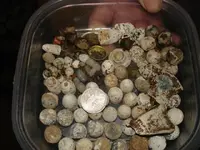
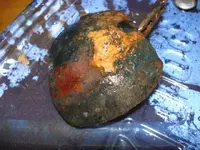


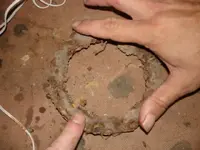
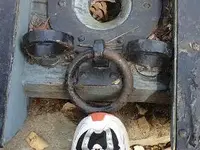
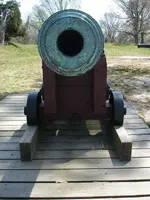
![NewStuff1[1].webp](/data/attachments/86/86043-d79b35adae5a3c8aef19b332c54c2ff3.jpg?hash=5iJmopxtu8)
